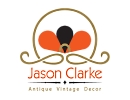Contact Seller
Jason Clarke Antiques
Tel07815 046645Please quote Antiques Atlas.


 Antique Telescope, English, 6-Draw, Brass, Leather
Antique Telescope, English, 6-Draw, Brass, Leather
 Antique Three-Draw Telescope, English, Walnut
Antique Three-Draw Telescope, English, Walnut
 Vintage 3-Draw Telescope, English, Navigation
Vintage 3-Draw Telescope, English, Navigation
 A Military Spotting Telescope With Leather Case
A Military Spotting Telescope With Leather Case
 Brass telescope on a folding tripod stand C1860
Brass telescope on a folding tripod stand C1860
 Antique 3 Draw Telescope, English Brass, Leather
Antique 3 Draw Telescope, English Brass, Leather
 Antique 3 Draw Telescope, English, Leather
Antique 3 Draw Telescope, English, Leather
 Brass Telescope - 19th Century
Brass Telescope - 19th Century
 Vintage Military Terrestrial Telescope, Canadian
Vintage Military Terrestrial Telescope, Canadian
 Vintage 2 Draw Telescope, English, Leather, Brass
Vintage 2 Draw Telescope, English, Leather, Brass
 19th Century Brass Five-draw Telescope
19th Century Brass Five-draw Telescope
 18th Century mahogany and brass telescope by Nairn
18th Century mahogany and brass telescope by Nairn
Non UK callers :
+44 7815 046645
Telescope by Watkins Engraved to Frances Nisbet


For sale, a late Eighteenth four draw telescope by Francis Watkins of Charing Cross engraved to Frances Nisbet.
This magnificent telescope is comprised of a quality rosewood barrel and measures 114cms when extended, 29cms when closed and has a one and three quarter inch objective lens which retains its original dust cap. The eyetube also retains its original dust slide and is engraved to the maker “Watkins – Charing Cross”. As one would expect from such a prestigious London maker, the fine brasswork is of superior quality.
Whereas most dedication on telescopes are also present on the first draw, somewhat unusually, the telescope is engraved to the fourth draw with the name Fra’s Nisbet. The most immediate association for the name would be for Fanny (Frances) Nisbet, the beleaguered wide of Lord Horatio Nelson. The style of the telescope was certainly popular through the latter part of the Eighteenth Century and early Nineteenth Century so would fit with The Nelsons’ time spent in London however it would have had to have been manufactured prior to 1787 when Fanny would have been using her previous surname. Nelson is documented through his letters to Fanny as having frequented Watkin’s shop and there are two Watkins telescopes that are attributed to being once owned by him.
There are therefore some tenuous links but the evidence is simply not strong enough for a firm attribution to Fanny Nisbet. It is therefore being sold as a high quality example by one of the foremost London makers of the period with a potentially interesting history.
The Watkins dynasty traces its roots back to the apprenticeship in 1737 of the renowned scientific instrument maker, Francis Watkins under a Nathaniel Adams. Watkins was granted his freedom of The Spectacle Maker’s Company in 1746 and opened premises using the sign of Sir Isaac Newton’s head in Charing Cross. Shortly after, he took on Addison Smith as an apprentice (later to become his son in law) and with whom he was to form a life-long partnership and or business relationship with shops in both Charing Cross and The Strand.
By 1758 the equally famous Dollond family had entered into a partnership agreement with Francis Watkins for the marketing and selling of the new lenses that solved the issue of both chromatic and spherical aberration encountered in telescope lenses, and Watkins as part of the deal, helped fund and arrange for the patent to be lodged.
The ensuing saga and various court proceedings are well renowned for the ferocity with which Peter Dollond sought to protect his father’s patent following his death but suffice to say that the messy business was to some extent career defining for both Watkins and Smith as their close involvement and the continuing repercussions of the argument about Dollond’s rights to the achromatic lens patent dragged on for the rest of their lives and beyond.
Watkins was a shrewd businessman and whilst being one of the foremost scientific instrument makers of the period, he also took a keen interest in property. It was more likely this latter interest that allowed Watkins to retire in 1785 to Richmond with his wife. Without an heir, the business was taken over by his nephews Jeremiah and Walter and they assumed ownership of the Charing Cross property and various other assets upon Francis’s death in 1791.
Just seven years later in 1798, Walter also died at Charing Cross from apoplexy and Jeremiah continued to run the family business until his own death in February of 1810 whereafter the business continued under family ownership beginning with Jeremiah’s widow Charlotte, then a John Watkins and finally Francis Watkins III. This younger name sake of the company’s founder was of too young an age to immediately take the reigns of this prestigious company and it was supported through this period by William Hill, a long standing employee of the Watkin’s family (since 1798) and his support was the reason for the resulting partnership.
The partnership of Francis Watkins III and William Hill was certainly effective from the early 1820’s and Watkins himself became a respected expert in his field. Completing his studies at the newly formed London Mechanic’s Institution, it was there that he nurtured a growing interest in electromagnetic science and the company’s output by the late 1820’s was starting to reflect the growing enthusiasm for the subject. By 1828, Watkins had published his own work entitled, “A Popular Sketch of Electro-Magnetism or Electro Dynamics” which was received with much enthusiasm by the scientific community for the ease with which it explained the subject to the interested enthusiast.
The dissemination of science to the masses was a cause which was beginning to gain much traction during the second quarter of the nineteenth century and it was in this environment that the partnership of Watkins & Hill began to thrive. Their voluminous catalogues of the period (with a special focus on electro-magnetism) were eagerly consumed by the public and institutions alike and Watkin’s successful publication was a useful draw for the business. He had also become the ‘curator of philosophical instruments and apparatus’ to the new University College, London a year before in 1827.
Watkins and his enduring interest in the science of electricity had established himself and the company with some of the leading scientists of the age and the likes of Faraday, Babbage and Wheatstone were all known to have been familiar with him. In 1833, he organised a meeting which was attended by Daniell, Lardner, Pepys, Phillips, Turner, Moselely and Faraday to inspect two inventions which induced electricity from magnets and which were invented by Joseph Saxton and Hippolyte Pixii. The former of which, Watkins and Hill produced for retail.
With the level of approbation that the company received, it continued to thrive until the death of both partners, Hill in 1846 and Watkins in 1847 but it remained a going concern under the stewardship of an Abraham Day on behalf of Francis’s widow Mary-Ann Watkins.
Francis’s son Francis Burton Watkins seems not to have aspired to the same career as his father and no records exist of his involvement with the company although the slow demise of the Charing Cross area and the rise of new companies such as JJ Griffin and Elliott Brothers must also have been catalysts for the inevitable fate of the company. Abraham Day is unlikely to have been seen in the same light as the company’s namesakes and although it lasted long enough to have exhibited with some success at The Great Exhibition, by 1855-56 Mary-Ann had taken steps to negotiate a deal with Elliott Brothers for the taking over of the business and its premises, a deal which was concluded in 1857 and saw the end of this remarkable century old family business.
SellerJason Clarke Antiques
View all stock from
Jason Clarke Antiques

 Private dealer
Private dealer
By appointment only
Newbury
Berkshire
Tel : 07815 046645
Non UK callers : +44 7815 046645
This magnificent telescope is comprised of a quality rosewood barrel and measures 114cms when extended, 29cms when closed and has a one and three quarter inch objective lens which retains its original dust cap. The eyetube also retains its original dust slide and is engraved to the maker “Watkins – Charing Cross”. As one would expect from such a prestigious London maker, the fine brasswork is of superior quality.
Whereas most dedication on telescopes are also present on the first draw, somewhat unusually, the telescope is engraved to the fourth draw with the name Fra’s Nisbet. The most immediate association for the name would be for Fanny (Frances) Nisbet, the beleaguered wide of Lord Horatio Nelson. The style of the telescope was certainly popular through the latter part of the Eighteenth Century and early Nineteenth Century so would fit with The Nelsons’ time spent in London however it would have had to have been manufactured prior to 1787 when Fanny would have been using her previous surname. Nelson is documented through his letters to Fanny as having frequented Watkin’s shop and there are two Watkins telescopes that are attributed to being once owned by him.
There are therefore some tenuous links but the evidence is simply not strong enough for a firm attribution to Fanny Nisbet. It is therefore being sold as a high quality example by one of the foremost London makers of the period with a potentially interesting history.
The Watkins dynasty traces its roots back to the apprenticeship in 1737 of the renowned scientific instrument maker, Francis Watkins under a Nathaniel Adams. Watkins was granted his freedom of The Spectacle Maker’s Company in 1746 and opened premises using the sign of Sir Isaac Newton’s head in Charing Cross. Shortly after, he took on Addison Smith as an apprentice (later to become his son in law) and with whom he was to form a life-long partnership and or business relationship with shops in both Charing Cross and The Strand.
By 1758 the equally famous Dollond family had entered into a partnership agreement with Francis Watkins for the marketing and selling of the new lenses that solved the issue of both chromatic and spherical aberration encountered in telescope lenses, and Watkins as part of the deal, helped fund and arrange for the patent to be lodged.
The ensuing saga and various court proceedings are well renowned for the ferocity with which Peter Dollond sought to protect his father’s patent following his death but suffice to say that the messy business was to some extent career defining for both Watkins and Smith as their close involvement and the continuing repercussions of the argument about Dollond’s rights to the achromatic lens patent dragged on for the rest of their lives and beyond.
Watkins was a shrewd businessman and whilst being one of the foremost scientific instrument makers of the period, he also took a keen interest in property. It was more likely this latter interest that allowed Watkins to retire in 1785 to Richmond with his wife. Without an heir, the business was taken over by his nephews Jeremiah and Walter and they assumed ownership of the Charing Cross property and various other assets upon Francis’s death in 1791.
Just seven years later in 1798, Walter also died at Charing Cross from apoplexy and Jeremiah continued to run the family business until his own death in February of 1810 whereafter the business continued under family ownership beginning with Jeremiah’s widow Charlotte, then a John Watkins and finally Francis Watkins III. This younger name sake of the company’s founder was of too young an age to immediately take the reigns of this prestigious company and it was supported through this period by William Hill, a long standing employee of the Watkin’s family (since 1798) and his support was the reason for the resulting partnership.
The partnership of Francis Watkins III and William Hill was certainly effective from the early 1820’s and Watkins himself became a respected expert in his field. Completing his studies at the newly formed London Mechanic’s Institution, it was there that he nurtured a growing interest in electromagnetic science and the company’s output by the late 1820’s was starting to reflect the growing enthusiasm for the subject. By 1828, Watkins had published his own work entitled, “A Popular Sketch of Electro-Magnetism or Electro Dynamics” which was received with much enthusiasm by the scientific community for the ease with which it explained the subject to the interested enthusiast.
The dissemination of science to the masses was a cause which was beginning to gain much traction during the second quarter of the nineteenth century and it was in this environment that the partnership of Watkins & Hill began to thrive. Their voluminous catalogues of the period (with a special focus on electro-magnetism) were eagerly consumed by the public and institutions alike and Watkin’s successful publication was a useful draw for the business. He had also become the ‘curator of philosophical instruments and apparatus’ to the new University College, London a year before in 1827.
Watkins and his enduring interest in the science of electricity had established himself and the company with some of the leading scientists of the age and the likes of Faraday, Babbage and Wheatstone were all known to have been familiar with him. In 1833, he organised a meeting which was attended by Daniell, Lardner, Pepys, Phillips, Turner, Moselely and Faraday to inspect two inventions which induced electricity from magnets and which were invented by Joseph Saxton and Hippolyte Pixii. The former of which, Watkins and Hill produced for retail.
With the level of approbation that the company received, it continued to thrive until the death of both partners, Hill in 1846 and Watkins in 1847 but it remained a going concern under the stewardship of an Abraham Day on behalf of Francis’s widow Mary-Ann Watkins.
Francis’s son Francis Burton Watkins seems not to have aspired to the same career as his father and no records exist of his involvement with the company although the slow demise of the Charing Cross area and the rise of new companies such as JJ Griffin and Elliott Brothers must also have been catalysts for the inevitable fate of the company. Abraham Day is unlikely to have been seen in the same light as the company’s namesakes and although it lasted long enough to have exhibited with some success at The Great Exhibition, by 1855-56 Mary-Ann had taken steps to negotiate a deal with Elliott Brothers for the taking over of the business and its premises, a deal which was concluded in 1857 and saw the end of this remarkable century old family business.
Price The price has been listed in British Pounds.
Conversion rates as of 11/DEC/2025. Euro & Dollar prices will vary and should only be used as a guide.
Always confirm final price with dealer. Sold
Period George III Antiques
Material Brass
Origin English
Item code as542a598
Status Sold
£0 
$0.00 
€0.00 

$

€

Conversion rates as of 11/DEC/2025. Euro & Dollar prices will vary and should only be used as a guide.
Always confirm final price with dealer. Sold
View all stock from
Jason Clarke Antiques

 Private dealer
Private dealerBy appointment only
Newbury
Berkshire
Tel : 07815 046645
Non UK callers : +44 7815 046645
You may also be interested in
 Antique Telescope, English, 6-Draw, Brass, Leather
Antique Telescope, English, 6-Draw, Brass, Leather
 Antique Three-Draw Telescope, English, Walnut
Antique Three-Draw Telescope, English, Walnut
 Vintage 3-Draw Telescope, English, Navigation
Vintage 3-Draw Telescope, English, Navigation
 A Military Spotting Telescope With Leather Case
A Military Spotting Telescope With Leather Case
 Brass telescope on a folding tripod stand C1860
Brass telescope on a folding tripod stand C1860
 Antique 3 Draw Telescope, English Brass, Leather
Antique 3 Draw Telescope, English Brass, Leather
 Antique 3 Draw Telescope, English, Leather
Antique 3 Draw Telescope, English, Leather
 Brass Telescope - 19th Century
Brass Telescope - 19th Century
 Vintage Military Terrestrial Telescope, Canadian
Vintage Military Terrestrial Telescope, Canadian
 Vintage 2 Draw Telescope, English, Leather, Brass
Vintage 2 Draw Telescope, English, Leather, Brass
 19th Century Brass Five-draw Telescope
19th Century Brass Five-draw Telescope
 18th Century mahogany and brass telescope by Nairn
18th Century mahogany and brass telescope by Nairn








